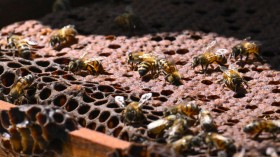In a collaboration between United States and Canadian efforts, ten agencies will be taking part in a field exercise this week in order to experiment with various strategies to prevent an Asian carp invasion.
According to the Associate Press (AP), no reproducing population of Asian carp have been found in Lake Erie just yet, but ecological experts are concerned that it is only a matter of time. These Asian carp - silver and bighead carp - are aggressive and invasive, having already made their way into the Mississippi River and the Illinois River.
Experts are saying that if these carp make it to the Great Lakes, where they can handily outcompete local fish populations, they could destroy a delicate ecosystem that supports the region's $7 billion fishing industry.
The point of these latest exercises is to test strategies that have been designed to prevent that from happening.
"This exercise will help us fine-tune our abilities to respond to an invasive species finding in the Great Lakes," Tammy Newcomb, senior water policy advisor of the Michigan Department of Natural Resources (DNR), said in a recent statement. "It's also a great opportunity for the Michigan DNR to work closely with other natural resources agencies to implement the Great Lakes invasive species mutual-aid agreement with our partner agencies."
The DNR is just one of 10 agencies with about 60 employees who will be helping test preventative strategies between Sep. 9 and 11.
According to the DNR, "this exercise will involve netting and electrofishing and will focus on the logistics for implementing an inter-jurisdictional response through the Mutual Aid Agreement recently signed by the Great Lakes governors" - from six of the eight Great Lake states and the province of Ontario.
You can check out some Asian carp prevention and control strategies implemented by the United States Geological Survey, the Illinois Department of Natural Resources, and Southern Illinois University as part of the Great Lakes Restoration Initiative in the video below.
[Credit: Great Lakes Restoration Initiative/USGS] Extended version here.
© 2024 NatureWorldNews.com All rights reserved. Do not reproduce without permission.




